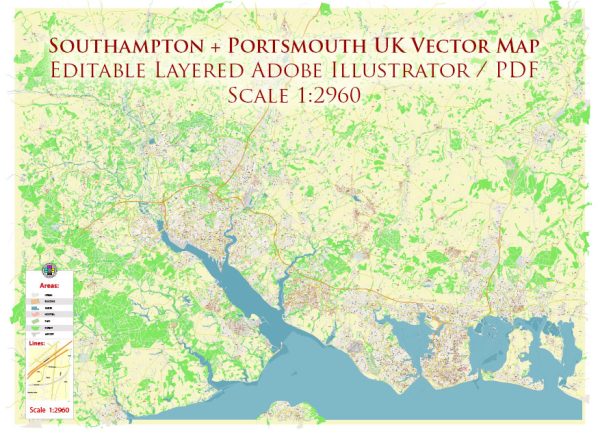Southampton and Portsmouth are two historic cities located on the south coast of the United Kingdom, both of which have undergone significant urban development over the years. While they are separate cities, they are closely connected geographically, economically, and culturally, often referred to as the “South Hampshire” region. Here’s a description of their urban development:
- Historical Significance: Southampton and Portsmouth have deep historical roots. Southampton, founded in the Roman era, has a rich maritime history and is famously known as the departure point for the Titanic. Portsmouth, on the other hand, is home to the historic Portsmouth Historic Dockyard, which includes HMS Victory, the flagship of Admiral Lord Nelson, and the Mary Rose, Henry VIII’s warship.
- Maritime Heritage: Both cities have strong maritime traditions. Southampton is a major port city and serves as a hub for cargo and passenger ships, with the Port of Southampton being one of the busiest in the UK. Portsmouth is home to the Royal Navy, and its historic dockyard is a major tourist attraction, celebrating the city’s maritime heritage.
- Economic Development: Over the years, both cities have diversified their economies. Southampton has developed as a center for the cruise industry, and it also has a growing aerospace sector with companies like Airbus. Portsmouth, in addition to its naval presence, has seen growth in technology and defense industries.
- Transportation Infrastructure: Southampton and Portsmouth are well-connected by road and rail. The M27 motorway links the two cities, and there are regular train services. These transportation links have facilitated economic growth and the movement of people between the two cities.
- Education and Culture: Both cities host universities (University of Southampton and the University of Portsmouth) and offer a range of cultural attractions, including theaters, museums, and galleries. These institutions and cultural amenities contribute to the vibrancy of the urban areas.
- Residential Development: Urban development in both cities has led to the construction of modern residential complexes, particularly along the waterfront areas. These developments offer attractive housing options with views of the sea.
- Regeneration Projects: Both Southampton and Portsmouth have seen various regeneration projects aimed at improving infrastructure, public spaces, and amenities. These projects aim to enhance the quality of life for residents and attract more visitors to the area.
- Tourism: The cities have worked to promote their tourist appeal, with various leisure and entertainment options, including shopping districts, restaurants, and recreational facilities.
- Challenges: Urban development in these cities has also brought challenges, including traffic congestion, housing affordability issues, and the need for sustainable urban planning to address environmental concerns.
- Sustainability: Both cities have made efforts to become more sustainable and environmentally friendly, with initiatives such as green spaces, cycling infrastructure, and public transportation improvements.
In summary, Southampton and Portsmouth, located on the south coast of the UK, have undergone significant urban development while maintaining their historical and maritime identities. These cities offer a blend of history, economic diversification, and cultural vibrancy, making them attractive places to live, work, and visit.


 Author: Kirill Shrayber, Ph.D.
Author: Kirill Shrayber, Ph.D.